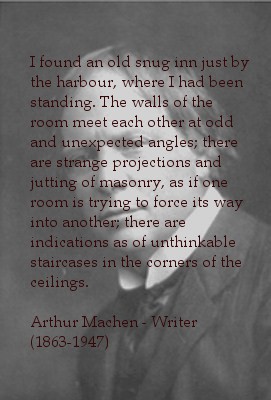


UNDERGROUND WHITBY






A sailor on duty at the Mast Head
There are also large sections of the book concerned with shipboard etiquette and the mechanics of the whale hunt. One such chapter is ‘The Mast Head’ which deals with the art of standing atop the ship’s t’gallant-mast on two thin parallel sticks called the t’gallant cross trees, where it was the sailor’s duty to keep a look out for any sign of the whale.
Melville goes on to describe in great detail a romantic history of the Mast Head and the fact that it has been irrevocably altered by the invention of the ‘crow’s nest’ by the Greenland whaler called Captain Sleet - it seems that the author is having fun at the expense of the Greenland whalers and the extreme weather conditions they had to endure, because when he refers to Captain Sleet he is in actual fact talking about the real inventor of the crow’s nest William Scoresby Senior.
'Heed it well, you pantheists!'
Barnacles and limpets are a common sight on any of the rocks around Whitby, and you could be forgiven for thinking that the two creatures are somehow related. Indeed for a long time naturalists classified both as molluscs, along with the whelks, mussels, cockles and winkles familiar from seafood stalls.
Its true that both barnacles and limpets are apparently sessile, that is to say they don't move much, and both have similar shaped shells. However in 1830 an army surgeon called J. V. Thompson published a paper snappily entitled On the cirripedes or barnacles; demonstrating their deceptive character; the extraordinary metamorphosis they undergo, and the class of animals to which they undisputably belong.
Thompson, who was an amateur naturalist by inclination, examined the life cycle of banacles and discovered that they had a planktonic larval stage called a nauplius exactly like that of a crab or lobster. The nauplius then went though transformation into another unique stage known as a cyprid.
Thompson found that the non-feeding cyprid had the job of finding a suitable rock or shell on which to settle and spend the rest of its adult life. Once a desirable location was found, the cyprid would cement itself to the surface with its attachment antennae and then form calcified plates around its body becoming a fully formed young barnacle.

Thompson's dilligent work placed the barnacles once and for all alongside the crabs, lobsters, shrimps and prawns in the class Crustacea.
In effect they glue their heads to a rock, build a protective casing around themselves with a door in the top, stick their legs (cirri) out and waft water containing tiny items of planktonic food into their mouths.
This is known as cirral beating, but you have to creep up very quietly to see it in action. Once there is a slight hint of vibration, or once a shadow is cast over the rockpool, the cirri immediately contract back into the safety of the shell in the blink of an eye.

The picture below shows several examples of the common cirripede Semibalanus balanoides on a Sandsend rock. As well as the adults there are plenty of youngsters with much smaller shells which are approximately a month or so old.
Also I've ringed a couple of 1-2 week old light brown post-larval individuals. These are just transforming from cyprid larvae into fully fledged barnacles, but have not yet become calcified.


 |
| RAF Danby Beacon radar station as it looked in 1940 |
 |
| Then Flight Lieutenant Peter Townsend |
 |
| The crashed Heinkel at Bannial Flatt farm |


Caedmon's Hymn as it appears in the Moore Bede
Dated to the eighth century, it cosists of 128 pages. The final page contains a version known as the Northumbrian aelda recension of Caedmon's Hymn, thought to be the earliest occurrence of the poem.
Here is a short clip of the programme in which, after a brief introduction, the poem is firstly read in Anglo Saxon with its rich rhythms and characteristic consonants, and then offered in a modern translation read by the actress Juliet Stevenson
